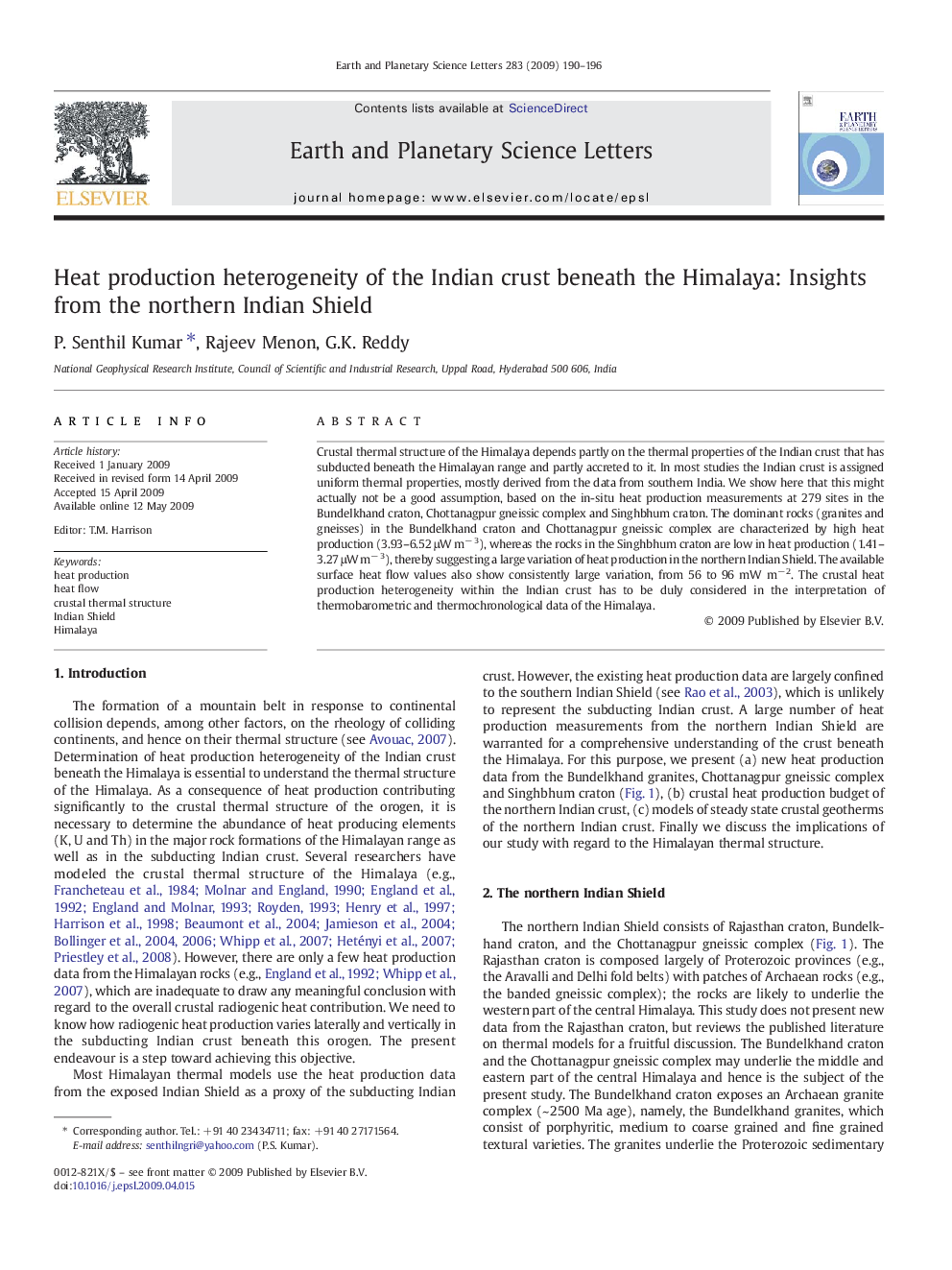| Article ID | Journal | Published Year | Pages | File Type |
|---|---|---|---|---|
| 4679039 | Earth and Planetary Science Letters | 2009 | 7 Pages |
Crustal thermal structure of the Himalaya depends partly on the thermal properties of the Indian crust that has subducted beneath the Himalayan range and partly accreted to it. In most studies the Indian crust is assigned uniform thermal properties, mostly derived from the data from southern India. We show here that this might actually not be a good assumption, based on the in-situ heat production measurements at 279 sites in the Bundelkhand craton, Chottanagpur gneissic complex and Singhbhum craton. The dominant rocks (granites and gneisses) in the Bundelkhand craton and Chottanagpur gneissic complex are characterized by high heat production (3.93–6.52 μW m− 3), whereas the rocks in the Singhbhum craton are low in heat production (1.41–3.27 μW m− 3), thereby suggesting a large variation of heat production in the northern Indian Shield. The available surface heat flow values also show consistently large variation, from 56 to 96 mW m− 2. The crustal heat production heterogeneity within the Indian crust has to be duly considered in the interpretation of thermobarometric and thermochronological data of the Himalaya.
